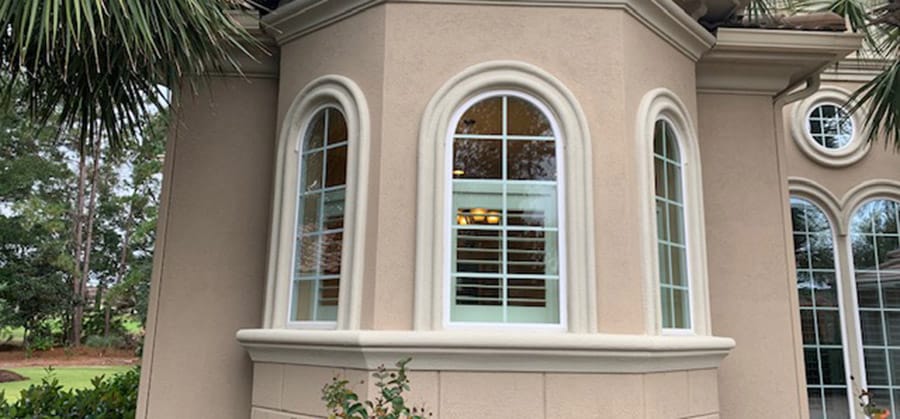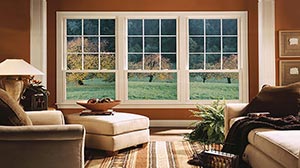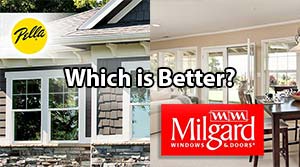
Windows are an important part of your home’s energy-efficiency and curb appeal. Windows have evolved over the years to what we find today. Some windows are functional, while others are fixed, providing natural light into the home.
Unlike older, single-pane windows, the biggest problem plaguing thermal windows is fogging between the glass panes caused by a lost thermal seal. If your windows are fogged, you may be asking how long do thermal windows last and can they be repaired?
Aluminum and vinyl thermal windows can last 20 years. Well-maintained wood and fiberglass windows can 30 years. Low-quality builder’s grade windows can fail in 5 to 8 years. Sunlight breaks down the window seals causing window failure. Once the seal fails, moist air is trapped between the glass panes causing window fogging.
Triple-pane windows are heavier than double-pane windows. Triple-pane windows are considered a high-end luxury product and are generally well constructed and last longer. However, they can still fail.
Triple-pane thermal windows have a lifespan of about 30 years. Triple-pane windows are more resistant to sunlight and condensation compared to double-pane windows. High-quality triple-pane windows can last longer than 30 years in ideal environments.

Why Thermal Windows Fail?
Many sources disagree on when windows need to be replaced. Some say that windows last ten years. Others say windows will last up to 40 years. Many factors affect the thermal windows’ lifespan. It’s hard to determine whose right among all the noise. The truth of the matter how long a window lasts depends on how well the window is made.
Thermal windows are made from two or three panes of glass separated by the gap filled with insulating gas. That insulating gas stops the cold or hot air from getting inside your home. During the summer, the thermal windows will keep the heat outside, while in the winter, it will keep the warm air inside.
Sunlight can wear out your windows fast. The UV rays break down the seals between the glass panes. As the seals fail, they start to fog from condensation. Direct sunlight affects all window types, and eventually, all windows fail.
How Long Do Wood Windows Last?
The lifespan of a window is greatly affected by the material it’s made from. Wood windows have a bad reputation because they can rot, but they’re also ones that last the longest. Wood is also an excellent insulator, and with proper care, it can last several decades.
Wood windows can last up to 30 years with routine maintenance. Wood windows are a higher-quality window and are typically only installed in custom-built new construction homes or after-market improvement.
Without regular maintenance, wood windows are susceptible to wood rot or warping, requiring premature replacement. Regular maintenance, including caulking and painting, is needed every 3 to 5 years. Wood window glass can lose its thermal seal just as other windows.
Pros and Cons of Wood Windows
The advantages of wood windows are:
- Appearance: Wood is sought after for it’s quality and appearance. Natural wood is more attractive than vinyl windows.
- Versatile: Wood windows can be painted or stained to match the interior and exterior of your home.
- Variety: Wood windows are available in double-hung, casement, bay windows, etc.
- Efficiency: Wood is a great insulator and helps prevent heat loss. Paired with double- or triple-pane glass can make wood windows a top choice in energy efficiency.
The disadvantages of wood windows are:
- Maintenance: Wood windows require routine maintenance to ensure they look great for many years to come. Poorly maintained wood windows could rot, crack, or warp due to heat and moisture.
- Cost: Wood windows are more expensive than vinyl or aluminum replacement windows.
How Long Fiberglass Windows Last
Fiberglass windows are the most sustainable windows. They are characterized by exceptional strength and durability. It can withstand extreme temperatures and harsh environments. Fiberglass windows can last up to 30 years or more.
Local climate also affects the durability of your windows. Withstanding storms is an important factor if you want your windows to last. Suppose you live in a place where extreme temperature swings, fiberglass windows are great because they don’t rot or warp.
If you live by the sea, remember that salt is corrosive. If the salt from the seas and oceans is set on your windows, it can cause significant damage. The best windows that are resistant to salt are aluminum windows.
Pros and Cons of Fiberglass Windows
The advantages of fiberglass windows are:
- Durable: Fiberglass windows are strong and durable. The frames resist warping from temperature fluctuations, making them a great choice in all climates. Fiberglass window frames resist damage from denting, scratching, warping, and rot.
- Energy Efficient: Fiberglass windows are energy-efficient. Like wood, fiberglass is a good insulator that resists heat loss. Fiberglass absorbs and holds heat, which helps keep your home comfortable. Paired with double- or triple-pane glass can make wood windows a top choice in energy efficiency.
- Low Maintenance: Fiberglass windows are low-maintenance. Fiberglass windows don’t warp, crack, rot, or rust. Fiberglass windows do not require routine painting.
- Variety: Wood windows are available in a variety of colors and styles like double-hung, casement, bay windows, etc.
The disadvantages of fiberglass windows are:
- Cost: Fiberglass windows cost more than vinyl windows but less than wood windows. Much of the added cost is due to the added strength and stability.
- Limited color choices: Fiberglass should not be painted; however, the color choices can be limited and vary between manufacturers.
How Long Do Aluminum & Aluminum-Clad Windows Last?
Aluminum and aluminum-clad windows can last 15 to 20 years. Some manufacturers state aluminum and aluminum-clad can last up to 40 to 50 years; this may only be true for high-quality, triple-pane windows.
We often see builder’s grade windows failing around the 12 to 15-year mark. Most aluminum builders’ grade windows are warrantied for only 6 to 10 years, depending on the manufacturer. The bottom line is how long an aluminum or aluminum-clad window lasts largely depends on how well the window is made.
Pros and Cons of Aluminum & Aluminum-Clad Windows
The advantages of aluminum & aluminum-clad windows are:
- Low maintenance: Aluminum requires less maintenance than wood. Most aluminum windows have a factory-coated or anodized finish that resists corrosion.
- Durable: Aluminum is lightweight and stronger than vinyl windows.
- Affordable: Aluminum windows are less expensive than wood and fiberglass window options.
- Styles: Aluminum windows come in various shapes and styles such as single- and double-hung, casement, round, half-moon, etc.
The disadvantages of aluminum & aluminum-clad windows are:
- Poor insulator: Aluminum doesn’t hold in heat as well as other materials like wood and fiberglass. Aluminum windows need weather-stripping and thermal treatments to offset this effect.
- Condensation: Moisture can form inside the aluminum frame which can cause problems and speed up failure of thermal seals. On aluminum-clad windows water can seep behind aluminum and decay the wood window framing.
- Avoid Coastal Areas: Aluminum frames are somewhat water resistant, but do corrode in coastal climates. Vinyl or fiberglass are better options along the coastlines.
How Long Do Vinyl Windows Last?
Builder-grade (aka contractor-grade) vinyl windows are commonly installed in new home construction. They look great when newly installed; however, they don’t stay this way for many years. Builder-grade vinyl windows generally last 5 to 10 years.
Common problems with builder-grade vinyl windows:
- Hardware Failure: the hardware on builder-grade windows is often made of cheap materials that easily break.
- Thermal Seal Failure: the window thermal seals are typically low-quality and tend to fail after 5 to 10 years.
- Poor Installation: new construction windows are typically installed by framers instead of trained window installers. Many times the vinyl windows are not flashed correctly, causing leaks to develop over time. Often the insulation around the window is also missed making the windows drafty.
Builders often purchase the lowest quality vinyl windows available. Many are made by low-quality manufacturers and are often only guaranteed a few years. Low-cost windows help builders cost construction costs and maximize profits for the company.
Builders will often warranty new construction homes for a period of one year. After that one year, damages fall back to manufacturer warranties, which only cover material defects and not labor. By the time the windows fail, all warranties have typically expired.

Can Thermal Windows Be Repaired?
For fogged thermal windows, which is the number one problem, there are a few remedies. If your windows are within the warranty, you can call the manufacturer to file a claim. Under warranty, a failed thermal seal indicates a defective product. Manufacturers will usually offer to send a representative out to replace the glass.
Outside of a warranty repair, you’re likely better off replacing the window than trying to repair it.
Some companies offer services in which they defog the windows. The contractor will drill a hole in the glass to remove the excess moisture build-up in the window. They then apply an anti-fog solution inside the windows and seal the hole in the glass.
This method’s problem is that the insulating gas is not restored, and the broken seal is not repaired. These repairs are often temporary, and over time, the moisture and fog will return. If the inner seal is severely damaged, the only repair is a replacement window.
On some windows, you can replace the grass insert without taking out the whole window. Some companies offer glass replacement where the contractor removes the old glass insert from the frame and installs a new glass insert into the frame.





